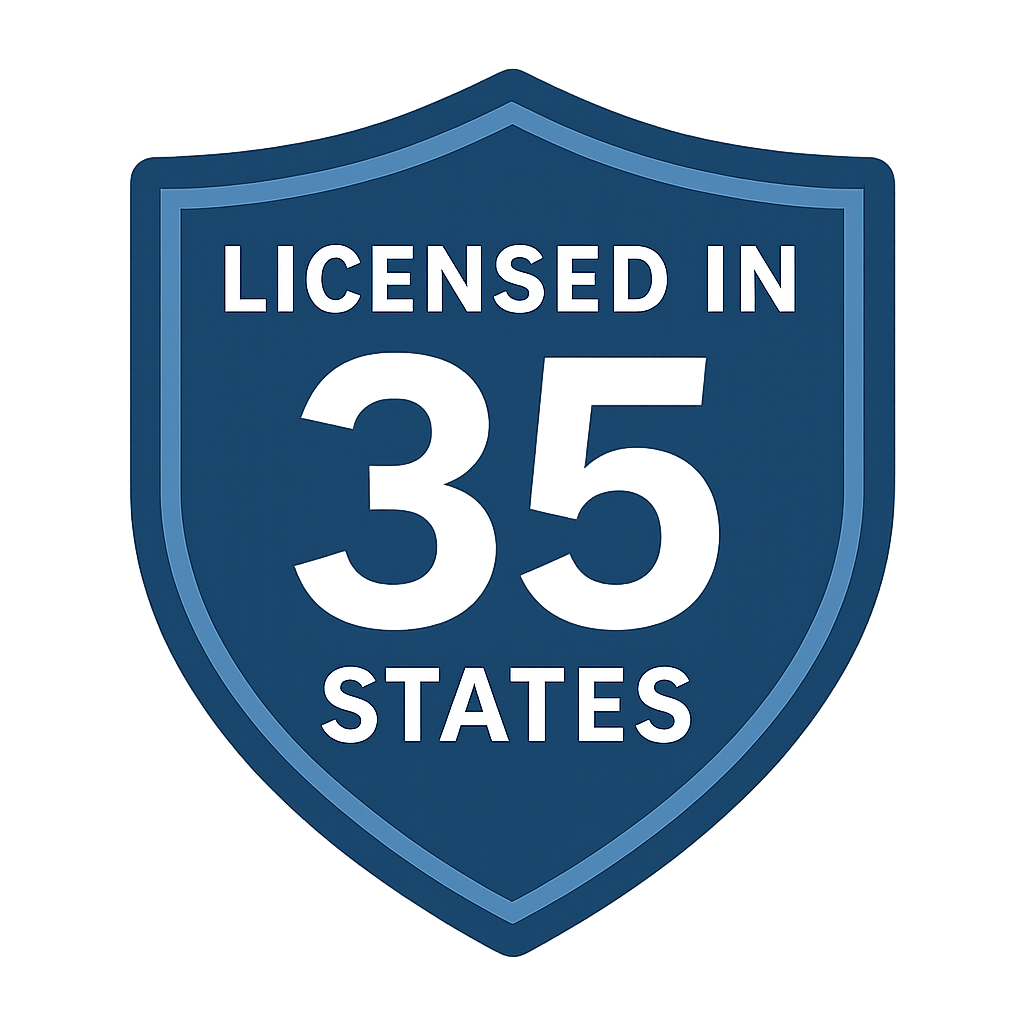Homeowners Insurance
Protect your home, family, and future — compare policies, carriers, and coverage options nationwide.
Table of Contents
Property coverage
Homeowners insurance protects your dwelling, other structures, and personal property against fire, theft, storms, and more.
Liability protection
Policies include liability coverage if someone is injured on your property — from slip-and-falls to dog bites.
Flexible options
Customize deductibles, add flood or earthquake endorsements, and compare carriers for pricing across all 50 states.
How homeowners insurance works nationwide
Owning a home is a cornerstone of financial security — but it comes with risks. From hurricanes on the Gulf Coast to wildfires in California, tornadoes in the Midwest, and nor’easters in the Northeast, every region faces its own hazards. Homeowners insurance is designed to cover your dwelling, personal belongings, liability exposures, and additional living expenses if you are displaced after a loss. Carriers underwrite policies based on location, construction type, square footage, roof age, and claims history.
To prepare, gather property details, prior insurance info, and any lender requirements. Our auto insurance page shows how bundled multi-policy discounts can apply — pairing auto and home often yields 10–25% savings. Homeowners policies are written in different forms (HO-3, HO-5, condo HO-6, renters HO-4, landlord DP-3), so understanding which form fits your dwelling is crucial. For example, an HO-3 covers most perils except exclusions like floods or earthquakes, which require separate policies.
Pricing is influenced by state regulations, credit score, construction features, and even proximity to fire hydrants or coastlines. Carriers may offer discounts for protective devices like smoke alarms, smart thermostats, or impact-resistant roofs. Review each option with an eye toward deductible trade-offs: higher deductibles lower premiums but raise out-of-pocket costs. Our insurance providers page explains which national and regional carriers are strongest for different states and risks.
When you bind coverage, you receive a declarations page and proof for your lender. ID cards aren’t used like auto, but mortgage servicers and HOAs require documentation. Claims are handled through adjusters, contractors, and in many cases direct deposit reimbursements. In catastrophic areas like Florida or Texas, carriers may impose separate hurricane deductibles or wind/hail deductibles. Earthquake coverage is often issued as a separate policy in California, Oregon, and Washington. Flood insurance comes through the NFIP or private markets nationwide.
With preparation, bundled discounts, and a clear understanding of policy forms, you can build a homeowners policy that not only satisfies your lender but also protects your largest investment and provides peace of mind.
Homeowners basics
What does a standard homeowners policy cover?
Dwelling, other structures, personal property, liability, and loss of use — exclusions like floods and earthquakes require separate coverage.
Do I need homeowners insurance if my home is paid off?
Not legally, but strongly recommended — protects your assets and liability exposures.
Are floods and earthquakes included?
No — they are separate. Flood is usually NFIP, earthquake requires add-on or stand-alone policy.
What is the difference between HO-3 and HO-5?
HO-3 is “special form” covering most perils for dwelling but named perils for contents. HO-5 is “comprehensive” covering all risks for both.
Do renters need homeowners insurance?
No — renters need an HO-4 policy which covers belongings and liability but not the building.
Pricing & savings
How are premiums calculated?
By location, home value, roof age, claims history, and credit. Discounts apply for protective devices and multi-policy bundles.
Can bundling auto and home save money?
Yes — pairing with auto insurance can yield up to 25% off with many carriers.
Does raising my deductible lower cost?
Yes — higher deductibles reduce premiums but raise out-of-pocket costs at claim time.
Do insurers check credit?
In most states, yes — credit-based insurance scores can influence price.
Are there discounts for newer roofs?
Often yes — impact-resistant roofs and updates can reduce premiums.
Claims & proof
How do I file a claim?
Contact your carrier immediately, document damage, and meet with an adjuster. Reimbursement is based on replacement cost or actual cash value.
What is loss of use?
Covers hotel and living expenses if your home is uninhabitable after a covered loss.
Do I get an ID card like auto?
No — you receive a declarations page as proof for lenders or HOAs.
Will filing a claim raise my premium?
Often yes — frequency and severity matter. Minor claims may affect rates at renewal.
Can I choose my contractor?
Usually yes, but many carriers have preferred networks for faster payments.
Coverage add-ons
Should I add flood insurance?
If you live in a floodplain, yes — required by lenders and smart protection for others.
Is earthquake coverage worth it in California?
Yes — earthquakes are excluded from standard policies. Separate coverage is required.
Can I add identity theft protection?
Many carriers offer endorsements for identity theft recovery and credit monitoring.
What about sewer backup?
Often excluded — add a sewer backup endorsement if available in your state.
Does homeowners cover home businesses?
Limited — review options on our business insurance page for full protection.
Regional concerns
Do coastal areas require windstorm coverage?
Yes — carriers may impose separate wind/hail deductibles in Gulf and Atlantic states.
How do wildfires affect policies in California?
Some carriers restrict underwriting — FAIR plans and surplus carriers may step in.
Is hail damage covered in the Midwest?
Yes, under comprehensive coverage — separate deductibles may apply.
Do hurricanes affect deductibles in Florida?
Yes — percentage-based hurricane deductibles apply.
Is mold damage covered?
Often excluded unless resulting from a covered peril.
Get a homeowners insurance quote today
Licensed agents nationwide can compare carriers and find discounts for your home.
Compare homeowners insurance plans
Standard HO-3
Covers most risks for dwelling and named perils for contents — most common form nationwide.
Comprehensive HO-5
All-risk coverage for both dwelling and belongings — higher cost, broader protection.
Condo & Renters
HO-6 for condos and HO-4 for renters — protects personal property and liability.
Service Area — United States
Protect your home with the right coverage
Last Updated on by Shawn Christie




